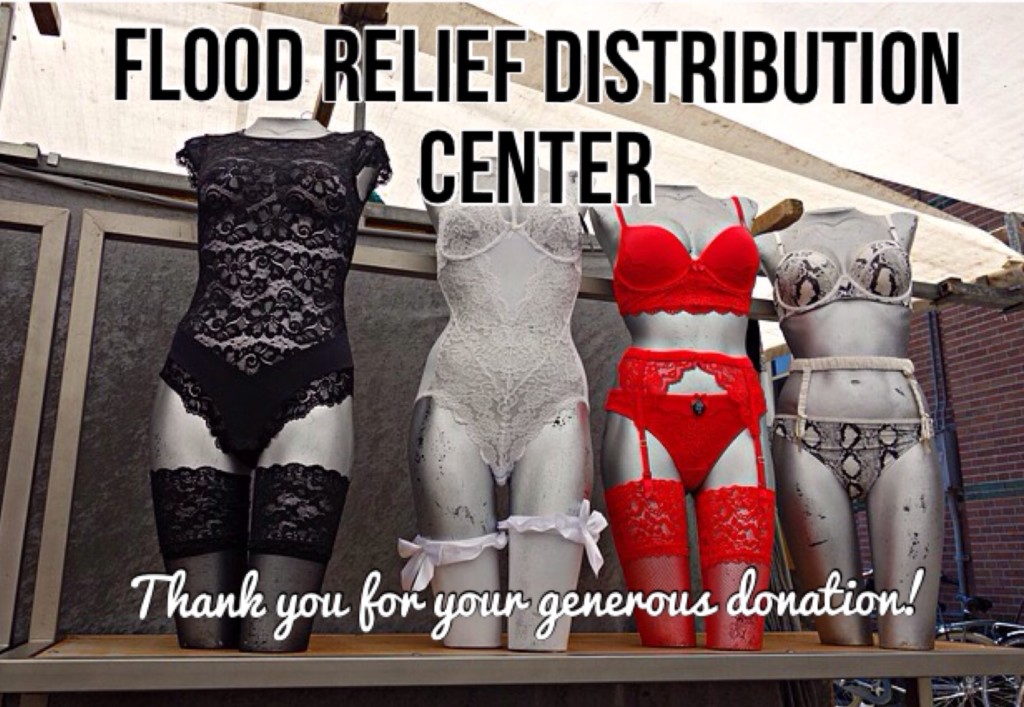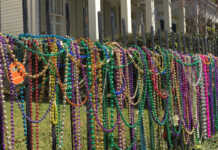
“The disaster after the disaster.”
I wasn’t familiar with this term until recently when my hometown endured widespread flooding. As one of the minority whose home did not flood, I jumped in with both feet into the relief effort. In doing so, I received a crash course in how donations can sometimes do more to hinder the relief efforts than help it.
“But they’ve lost everything, right? Wouldn’t anything help?” Well, no. They haven’t lost their families. They haven’t lost their dignity. And they haven’t lost their desire to wear clean, unused underwear.
Can I just be real for a moment? For as many thoughtful, wonderful helpful donations, I have seen just as many that leave me scratching my head. For example, I think I feel safe in saying on behalf of flood victims—no one needs a mounted deer head when they’ve lost their home and are living in a travel trailer.
“But wait a minute!” I can hear you pushing back. Every little bit helps right? When it comes time to buy drywall, every dollar they aren’t spending on deer heads is another dollar they can spend on drywall, right? NO. Just no.


Lest this come across as some sort of charity snobbery, I feel I need to clarify. This is absolutely not about the value of the donation or the financial means of the giver. I have seen a single jar of peanut butter donated with as much heart as a $10,000 check. This is about being thoughtful in our giving as opposed to using it as an opportunity to rid our own closet of our rejected items and feel like we did something special.
“Yes, but I donated that one shoe thinking there may be an amputee …” NO.
“But I gave my crotchless panties to the church because flood couples still need sexy time …” NO.
“I just knew that a live kitten would make a child happy again …” NO.
“Well if they don’t want my expired NyQuil, they must not really be that needy …” NO.
And for as many utterly ridiculous donations, there are those which are truly well meaning, but are simply not thought out. One of the biggest burdens on relief efforts is the unnecessary donation of used clothing. Clothing is the most donated, least requested and most labor intensive donation to process. It takes time and valuable manpower to sort. If often comes dirty or with a smell. And for those who have lost their homes, they do not need more than one or two outfits because they simply cannot store it.
Every single donation center I know of has been inundated with used clothes. Even when they say they are not accepting clothes. Even when they put up signs, post it on social media, and lock the doors at night, the clothes keep on coming. At a distribution center where I’ve worked, there have been hundreds of garbage bags placed under, around and in front of huge signs that say, “We are not accepting clothes.” When this happens, the only logical conclusion is that this was not a thoughtful donation that took the recipients’ needs into account. It was a house-cleaning mission.
So to make it easy, after consulting with my fellow relief workers and numerous victims, I’ve complied a list of things flood victims DON’T need. If you find yourself joyfully loading the Tahoe with any of these items, stop, turn around and bring them back to your garage.
10. Niche home décor. The peacock feathers, the Elvis commemorative plates, the stuffed deer heads. No flood victim wakes up and says, “Honey, I think I’ll head down to the food pantry and see if they have any deer heads we can use to spruce up the ole FEMA trailer.”
9. Expired food. Do I really need to explain this one?
8. Teddy Bears. While children do need comfort after losing their toys and homes, teddy bears are a commonly donated item that is space and labor intensive for distribution centers and are often discarded due to hygiene issues.
7. Lingerie. Yes flood couples still need sexy time. No, the church does not want to distribute that for you. Also refer to #8 on hygiene issues.
6. Half empty bottles of anything. With open bottles comes contamination. No distribution center will risk that liability. It will go in a dumpster.
5. Unmatched pairs of anything. No one is using this.
4. Blankets with holes. Either it’s cold or it’s hot. Blankets don’t need to come with vents for air flow.
3. Contributions that require more from the victims than from you. “We want to come and work on your house but we need hotels, laundry services and three meals a day.” Make your own arrangements for these things before you arrive.
2. Broken things. Games with pieces missing. Electronics that no longer function. Appliances with missing attachments.
1. Dirty Used Clothing. If you are dropping off bags of smelly stained clothing anywhere but your own washer, you are not part of the solution; you are part of the problem. If you really want to help in this area, find a place actively taking donations, and deliver, clean, usable, sorted clothing.
In all seriousness, Louisiana is in a crisis. But we haven’t lost our sense of humor and we haven’t lost our dignity. Let’s be thoughtful in our giving. Let’s make contributions that actually get people back on their feet. Give monetary donations if you can. Allowing victims the freedom to purchase according to their exact needs offers the best chance of true recovery, is more cost effective than shipping heavy items and dramatically reduces the consumption of preciously scarce volunteer labor. And give of your time. Whether it be hanging drywall, cooking a meal, or providing childcare, everyone can offer something to help their neighbors get back on their feet.
















